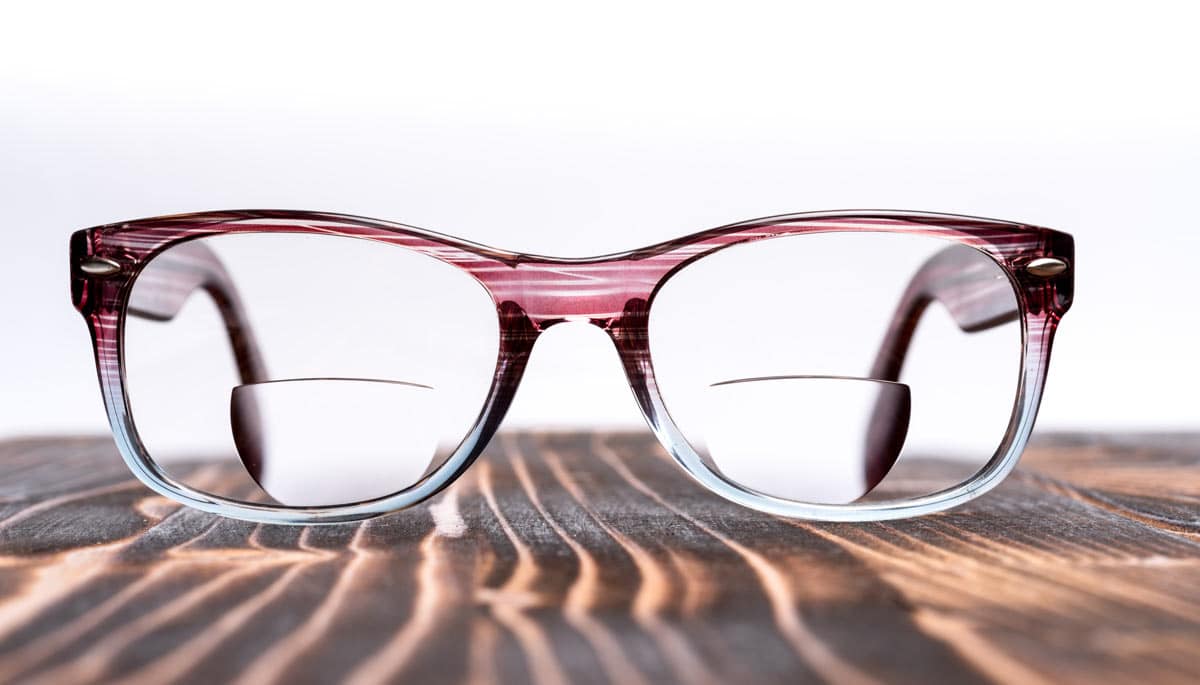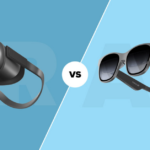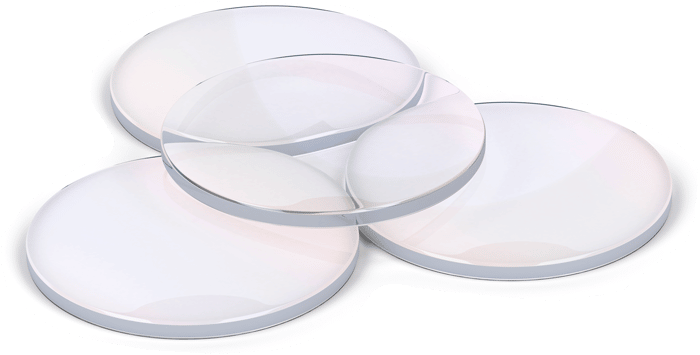With so many different types of lenses on the market and so many options to choose from, it can get confusing to know what you need. This guide will run through everything you need to know about bifocal lenses, the different types and their benefits so that you can assess if they are the right choice for your needs.
What are Bifocal lenses?
Bi- in the dictionary, is a combining form meaning “twice”, “two” used in the formation of compound words for example biannual and bilingual. So, to have bifocal lenses is to have two prescriptions in one lens, nearly always long-distance middle to top of the lens and close up, for reading for example, at the bottom. Not to be confused with varifocal lenses, Bifocals can cater to two prescription needs. For more information on the difference between bifocals and varifocals, read our handy guide.
Thought to have originated way back in the 1700s, the bifocal has been a staple in optometry for a long time and benefitted many patients. In the modern age, however, there are so many lens variations that it can often be confusing as to which type you should have for your prescription and your preference.
Do I need bifocal lenses?
Bifocal lenses are best suited to people who have 2 prescription needs, for example, if they are both nearsighted and farsighted. These needs are most common in people aged over 40 as our eyes begin to have trouble focusing on objects at different distances away, however, bifocals can be a suitable option for any age.
Bifocal lenses can be convenient for those who don’t want to keep switching between pairs of glasses to suit their needs, as both lenses can be accommodated in one lens.
The benefits of bifocal lenses
There are several benefits to having bifocal lenses:
You only need one pair of glasses
The biggest benefit of having bifocal lenses is the need for only one pair of glasses, preventing you from having to constantly switch between pairs, when driving and reading, for example. Ultimately convenient, many people favour combining their prescriptions into one lens to make life that little bit easier.
Cost-effective
Bifocal lenses are often the more cost-effective choice, over options like progressive lenses.
Progressive lenses are a more advanced lens with a less drastic difference in prescription types, and often come at a much higher price point than bifocal lenses.
View Lensology’s bifocal lenses >
Different types of bifocal lenses
There are a few types of bifocals to choose from with varying popularity;
D Seg Bifocal lenses
The most popular and widely used style of Bifocal, these are instantly recognisable by their horizontal D shape in the bottom section of the lens closest to the nose. They are generally the most commonly used as they are easy to adapt to, with the natural positioning of the close-up section of the lens most natural for the wearer.
Round Bifocal lenses
The same style of lens with the close-up range centred closer to the nose of the wearer, the round bifocal is just as stated, a round shape in place of the horizontal D shape. The round shape for some wearers makes reading easier, but for others, the reduced width of near vision at the top of the close-up section of lens can make reading more difficult and so they tend to opt for the D shape. We can discuss this further with you should you have any questions about this, we appreciate each person is different.
Executive or split lenses
This style of bifocal is a near 50/50 split between close and distance viewing, with a visible seam directly across the middle of the lens. Again, personal preference should be taken into account here. One of the less popular options of lens, the whole of the bottom section is dedicated to close up work so predominantly reading. If you are a prolific reader, then this may well be a good option for you. Again, once you have your prescription you can chat this through with us to determine if you require this much close-up viewing within your lenses.
How do you choose?
There are lenses that can be split across two prescriptions at any part of the lens, which can cater for different job types or hobbies. There are variations on the shape of the D, curve top and Double D. Bifocals can also be coated and manufactured for transition should you wish. There are many fantastic options open to you, but we do appreciate this can raise a lot of questions as to how and what to choose.
Once you have your prescription for your bifocals, you can get new bifocal lenses fitted to your frames using Lensology’s easy postal reglazing service. Simply request a free postal pack today to get started, or if you are unsure on what you need then contact one of our friendly technicians today who can offer expert guidance.
Need some quick answers? read our FAQs.







